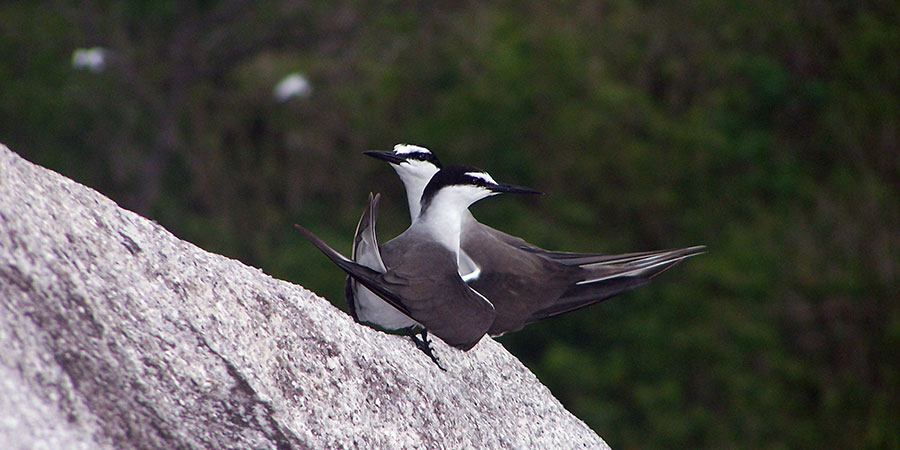
The lives of birds are mysteries especially for the adventurous and long-ranging seabirds. There is only so much actual knowledge that you can gain about a species that spends most of its time in the air or at sea. Neither place is well suited for human beings. A clever man indeed it was that first thought of ringing birds for scientific purpose; attaching a small, individually numbered metal ring to the leg of a wild bird. His name was Hans Christian Cornelius Mortenson and he began by ringing European Starlings in 1899. Since then the ringing and subsequent recapture of birds has provided a wealth of information on migration, longevity, mortality, population studies, territoriality and feeding behaviour.
On Cousin Island each year we have up to 300,000 seabirds visiting to nest. The inhabitants of Cousin Island can only marvel at these birds and wonder where on Earth they have been travelling to and what their individual stories are.
One such bird-a Bridled-Tern Sterna anaethetus – was caught in a mist net in 2012 by a researcher hoping to catch the Seychelles Warbler. The bird had a ring and a contact address, which the researcher being a keen bird man decided to investigate. By contacting the British Trust for Ornithology (BTO) and providing them with the ring details he received back some astonishing news; this bird, which had unwittingly flown into his mist net was an old great grandfather bird, a bird that had been around for at least 20 years!
It often astonishes me how something so small with a life so treacherous can have lived this long, feeding itself on surface swimming fish and rearing young each year. The answer is simply that this bird is a perfect design by nature, a perfect example of this species in all its glory!
April Burt

